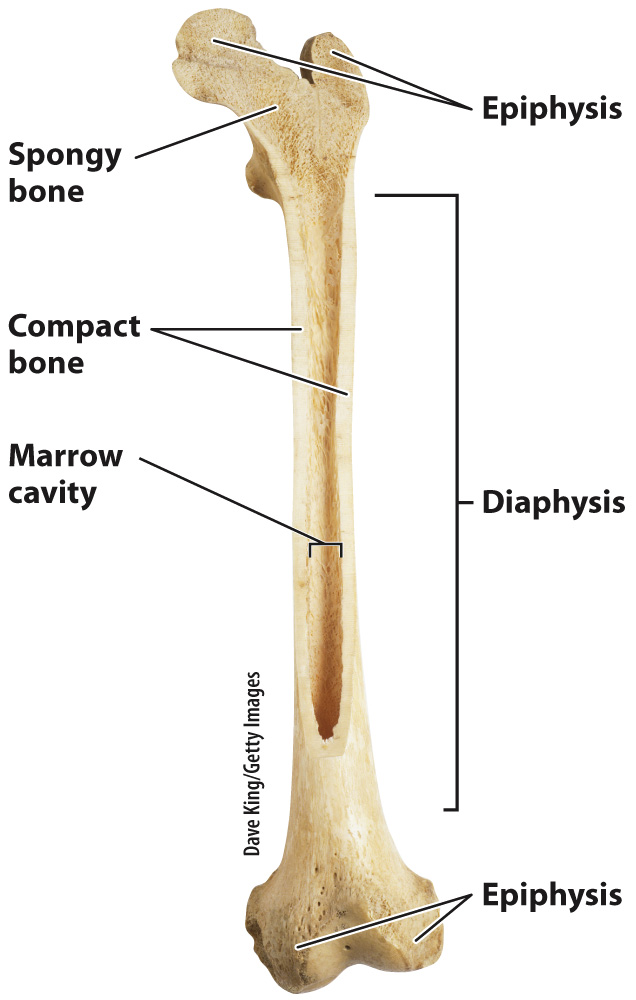Two main types of bone are compact and spongy bone.

The cartilage template of a bone is replaced by one of two main types of bone (Fig. 37.19). Both types contribute to the overall form of many bones in the body. Compact bone forms the walls of the bone’s shaft. It consists mainly of dense, mineralized bone tissue containing bone cells derived from osteoblasts and the network of blood vessels supplying them with oxygen and nutrients.
A second type of bone, called spongy bone, consists of small plates and rods known as trabeculae with spaces between them. Spongy bone is found in the ends of limb bones and within the vertebrae. It reduces the weight of bone in these regions, but it is also stiff so that forces are transmitted effectively from the joint to the bone shaft. Bone marrow, a fatty tissue found between trabeculae and also within the bone’s central cavity, contains many important cells, including blood-
802